For years, the planetarium has been a popular space with schoolgoers and students. Anyone who has visited will recall the wonder of looking up into the night sky and realising the vastness of the universe. Now, after 64 years, the restoration and upgrading of this historic Joburg attraction has given new meaning to the phrase "To infinity and beyond" (made famous by Space Ranger Buzz Lightyear in Toy Story).
The task of structurally reimagining a traditional planetarium into what is now the fully interactive Wits Anglo American Digital Dome fell to Kate Otten Architects. According to Kate Otten and William Martinson, the project aimed to "create a visualisation laboratory within this iconic landmark, broadening its role well beyond astronomy, reimagining its potential, and enabling unparalleled community engagement". From the start, the building had to be respected as a heritage site, so any additions – which included an extension to the north wing – were thoughtfully planned out. It's an area in which Otten excels; keeping the integrity of the language of Joburg's architecture, while sensitively bringing it into the future.
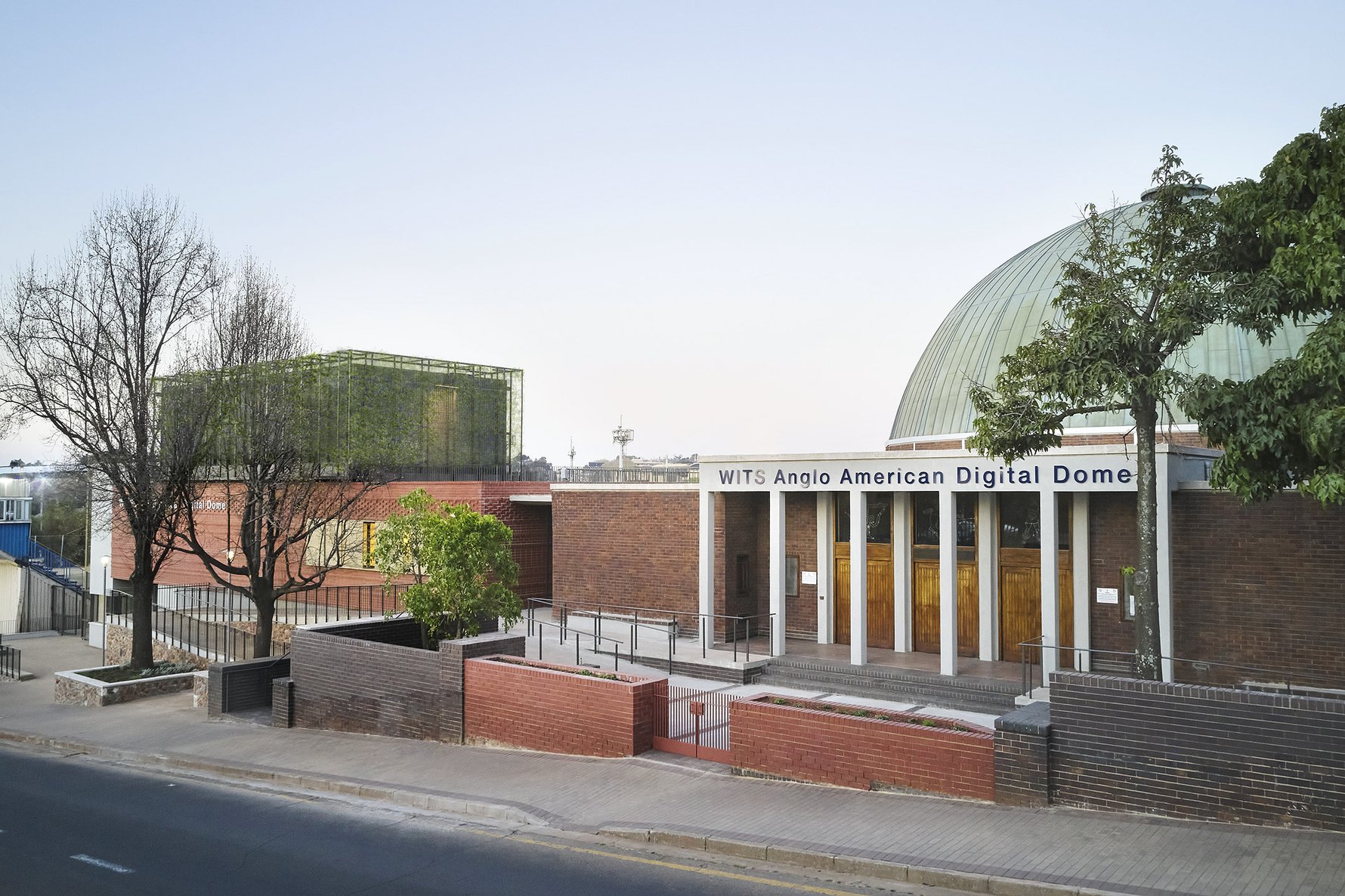
Africa's first full-sized planetarium
With its iconic dome (now green with age) visible from the M1 highway, the the historic Wits Planetarium on the campus of the University of the Witwatersrand was built to house a then modernised Zeiss planetarium projector. It had the distinction of being the first full-sized planetarium in Africa.Over time, the planetarium has awed and educated thousands. In 1969, it was the first venue in South Africa to screen footage of the Apollo 11 moon landing. Computer-aided shows were implemented in 1985, while laser shows were introduced five years later. It saw through the Millennium celebrations in 2000, while 2005 was the year of a major technology upgrade.
A dome to crown it all
The original planetarium building was designed by architects R. Spencer Parker, Anthony W. Parker, and Eyvind Niels Finsen, with structural engineer C. A. Rigby. It was an impressive achievement for several reasons, foremost among those being the sheer size of the dome – the building's crowning glory.The copper-clad exterior is supported by a concrete dome that stretches a whopping 22 metres in diameter. The interior underside of the dome houses the sheet aluminium projector screen, which is held in place by a geodesic dome – a light, hemispherical shell-like structure – made of thousands of flat steel bars. The erection of this framework and the fixing of the screen took two and a half months, while the "whispering gallery" effect was avoided by perforating the aluminium sheets with 30 million holes. In between the inner and outer forms of the planetarium, there's said to be enough room for a person to stand upright.
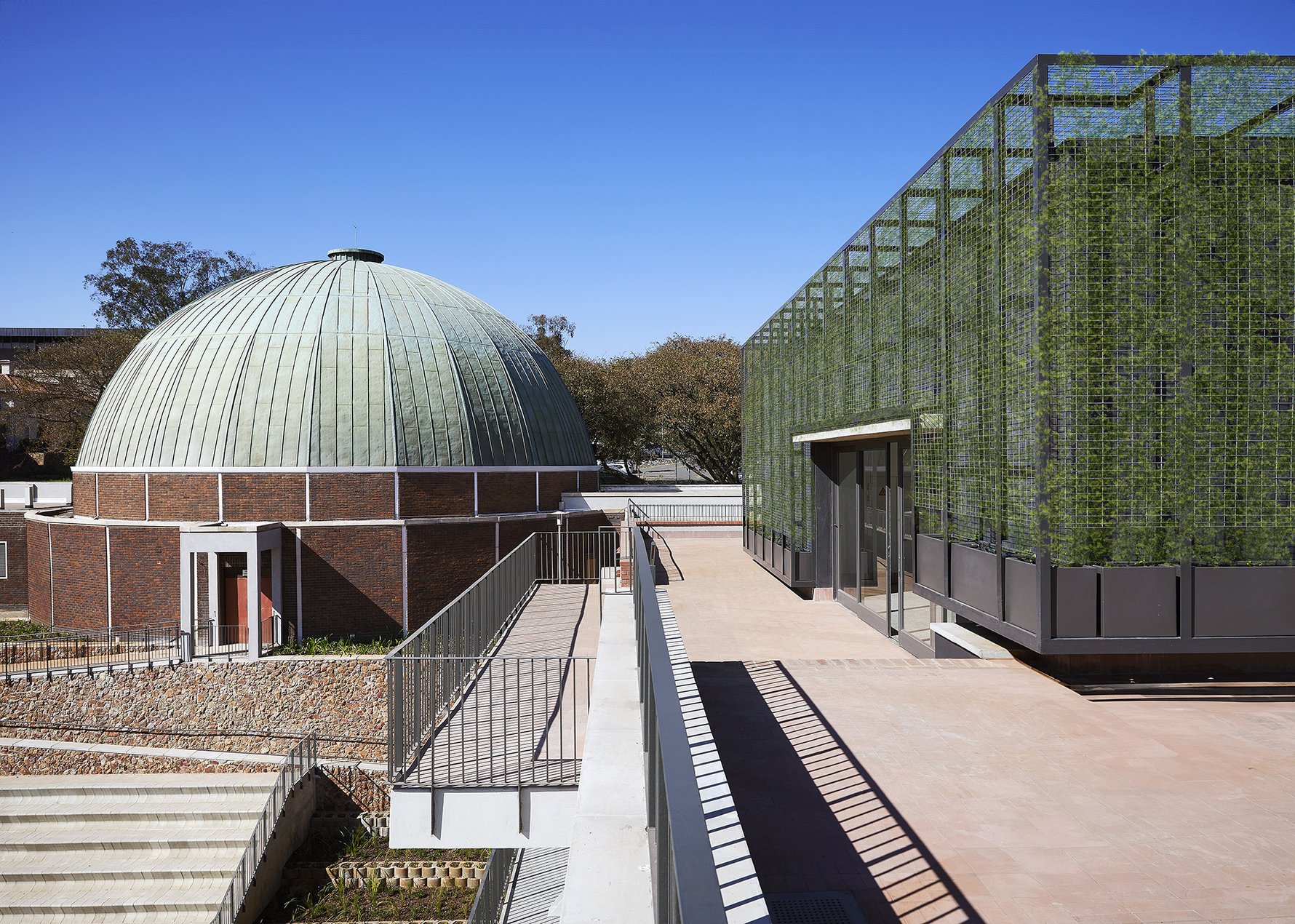
The circular face brick base of the building is bookended by two rectangular flat-roofed pavilions. Situated on the east side of Yale Road, the pedestrian entrance was through a rectangular formal garden space, up a broad flight of steps through a symmetrical modernist portico (a covered porch lined with columns), and through a set of timber entrance doors, etched with decorative interpretations of the constellations Ophiuchus, Sagittarius, and Perseus.
Projecting a future
In 1956, on the 70th anniversary of the founding of Johannesburg, the Festival Committee decided it would be fitting to mark the occasion by raising funds to buy and house a planetarium projector. When the committee found that purchasing a new projector wouldn't be possible within a year, an existing projector that had been in use since the 1930s was obtained from the City Council of Hamburg. This was dismantled and taken to the Zeiss factory in Oberkochen for modernisation, rebuilt with apparatus and improvements developed since its original construction. The result was the Zeiss Mk III Projector that was until recently used in the planetarium.The planetarium, reimagined
In 2022, it was announced that the iconic Zeiss projector that had been the heart of the planetarium for decades would be retired as part of a major revamp.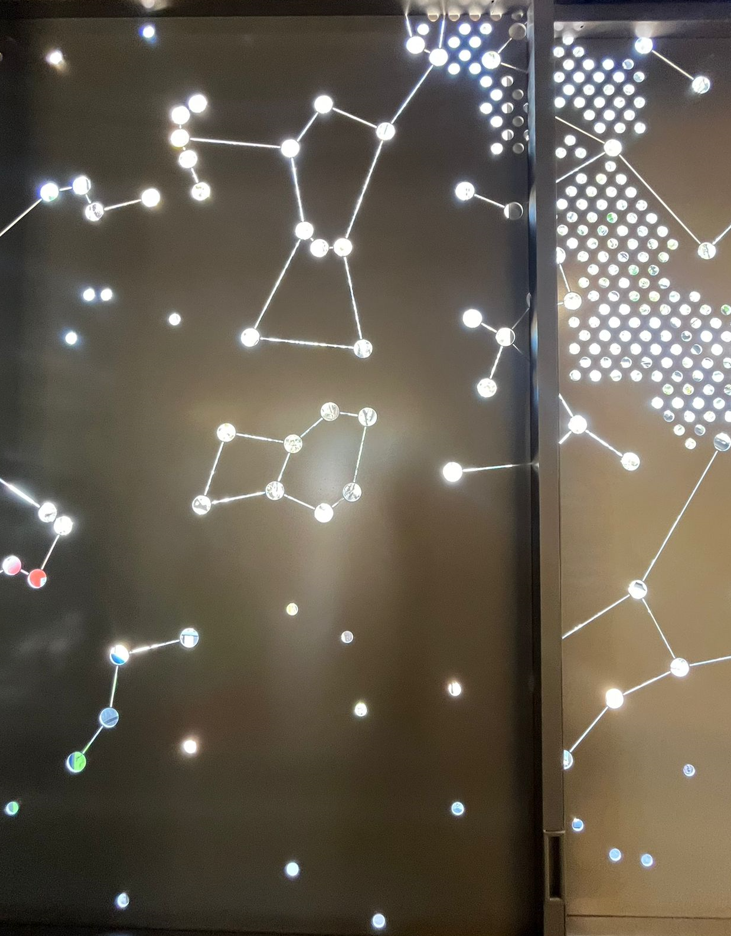
Most exciting, however, is the new technology housed in the Digital Dome: a collection of 10 digital projectors capable of producing stunning imagery. The digital dome will bring content to life in new ways, offering a 360-degree storytelling experience. An utterly immersive experience is promised.
With upgraded seating and unmatched screening quality, this state-of-the-art digital facility is about more than entertainment. An increased focus on education is going to be key to the public reopening of the Digital Dome in February of 2025, while the scope of its programming will widen beyond the origins of the universe to include astrophysics, the digital arts, artificial medicine, and microbiology.
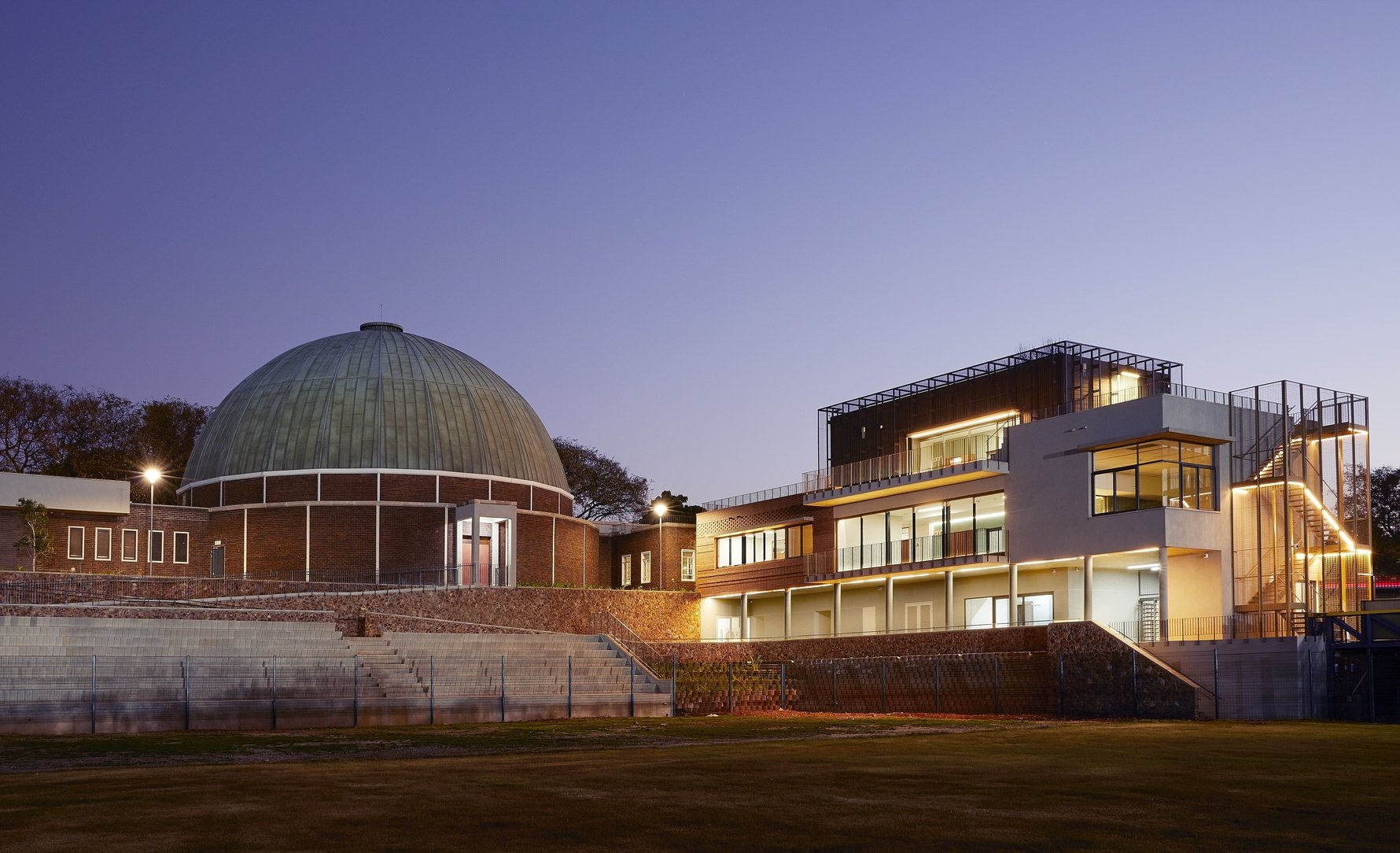
"We have created a high-tech, immersive experience," says Dr Moumita Aich, the Head of the Wits Anglo American Digital Dome. "Visitors, students, and researchers will feel as if they are part of the shows – whether they are gliding through the middle of the International Space Station or following a herd of wildebeest through the migrations in the Serengeti." Upon its relaunch, visitors to the Digital Dome will be able to view a series of six shows donated by the American Museum of Natural History.
We can't wait to visit and, of course, we'll keep you posted once we have.


-4_m.jpg)

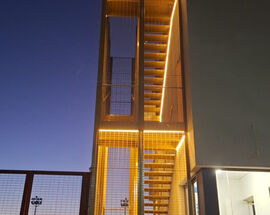


Comments